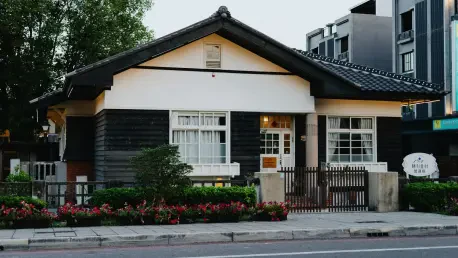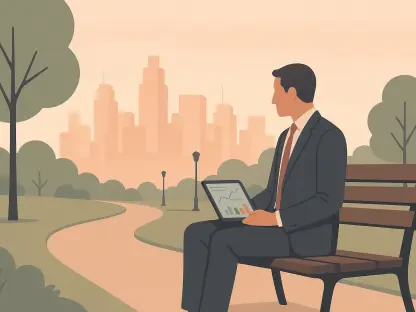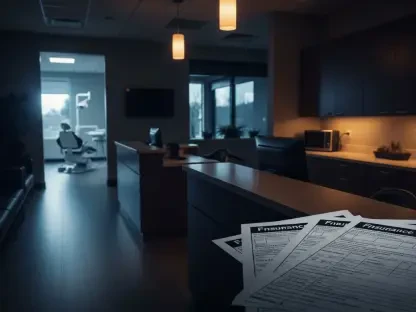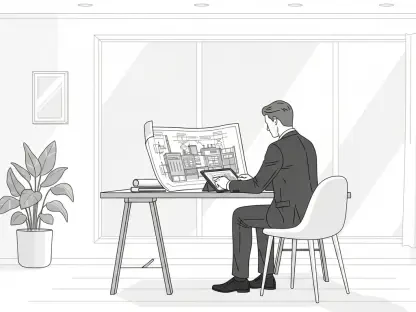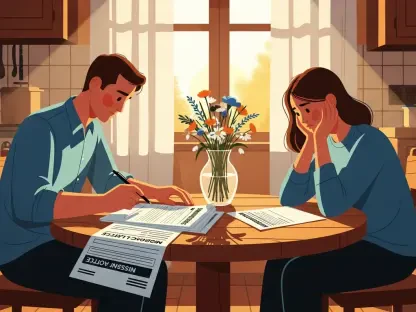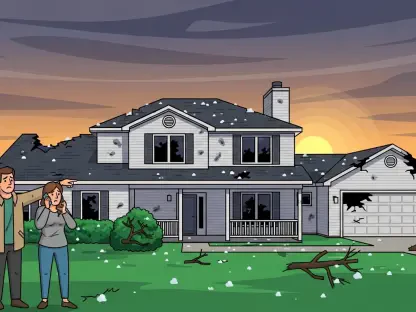In the evolving landscape of the housing market, a myriad of factors contributes to the difficulty of achieving homeownership, and rising homeowner’s insurance rates certainly play a pivotal role. These ballooning costs, exacerbated by an increasing frequency of natural disasters, add a complex layer of challenges for not only potential buyers but also current homeowners who strive to maintain financial stability amidst these mounting pressures.
The Financial Strain of Escalating Insurance Rates
Rising Costs and Housing Affordability
The rising costs of insurance premiums have become a significant barrier to affordable housing, affecting the purchasing power of those looking to enter the housing market. As natural disasters like hurricanes, wildfires, and floods grow more frequent and severe, insurers adjust their pricing models to hedge against potential increases in claims and payouts. This escalation in insurance costs creates an economic ripple effect, where many are priced out of neighborhoods they once considered affordable. For these prospective homeowners, the compound burden of high property prices and mortgage interest rates makes it increasingly difficult to align their financial capacities with market demands. This economic scenario severely undermines the fundamental premise of housing as a staple of security and investment.
The financial landscape of the housing market is further complicated by these incremental costs, which do not merely reflect the rising frequency of natural disasters but also a collective uncertainty about future climatic impacts. Insurers, attempting to mitigate their risks, impose ever-higher premiums, shifting costs onto policyholders and, by extension, onto prospective homebuyers. Consequently, many individuals who once considered a comfortable foray into homeownership now find themselves caught in a web of economic constraints. The heightened insurance costs are not just an additional line item in household budgets but often the tipping point that prevents the realization of homeownership dreams. This trend demonstrates a growing disconnect between market potential and individual financial reality, as the costs of safeguarding a home from nature’s vagaries soar.
Effects on Prospective Buyers
Prospective buyers face an increasingly formidable challenge as they attempt to navigate the churning waters of the current real estate market. Heightened insurance costs add a significant financial layer to the already daunting task of saving for down payments, closing costs, and other initial expenses that accompany home purchasing. This compounded obstacle effectively locks many individuals and families out of potential opportunities, despite being otherwise financially prepared. For many would-be buyers, the prospect of added insurance premiums tips the scales of affordability unfavorably, thus delaying or deterring their entry into the housing market altogether.
Despite having accounted for home prices and anticipated mortgage payments, many prospective buyers reach a financial impasse with the added insurance costs. The realization that even well-considered financial plans are insufficient can be disheartening for those aspiring to transition from renters to owners. In particular, first-time homebuyers experience these pressures more acutely, as they navigate the constraints of their budgeting thresholds. The escalating expenses cast a long shadow over dreams of homeownership, limiting options and fostering scenarios where potential buyers might remain renters longer than they had hoped or planned. This cascading effect has the broader implication of delaying wealth accumulation and economic mobility for significant segments of the population.
Impact on Existing Homeowners
Budget Constraints and Financial Instability
Existing homeowners find themselves grappling with the repercussions of escalating insurance premiums, which tighten their monthly budgets and can significantly destabilize their financial footing. Individuals with fixed incomes are particularly vulnerable, as rising costs are not offset by corresponding income increases, intensifying economic pressures. This dynamic fosters an environment ripe for financial distress, as these homeowners contend with expanding obligations amidst static resources. The swelling premiums potentially heighten the risk of default for some, jeopardizing long-term financial stability and welfare.
Financial challenges caused by rising homeowners insurance costs can reshape the economic landscape for those who have already established homeownership. Many homeowners, having anticipated predictable expenses such as property taxes and mortgage payments, now grapple with unforeseen financial demands in the form of insurance hikes. This strain on household finances not only restricts discretionary spending but can also force tough decisions about asset allocation and savings priorities. In some cases, homeowners might defer necessary home maintenance or improvements to offset insurance premiums, which could have long-term implications on their property’s value and livability. Cumulatively, these pressures manifest in a broader economic inertia that threatens to erode the financial security that homeownership traditionally represents.
Property Depreciation in High-Risk Areas
In regions prone to natural disasters, property values may depreciate as surging insurance costs deter both buyers and sellers. Homeowners in these high-risk areas contend with a unique challenge; as insurance costs rise, property equity risks being eroded, undermining the financial advantages traditionally associated with real estate investment. These inflated insurance expenses effectively produce a chilling effect on market activity as potential buyers weigh the costs of ownership against potential returns.
Increasing insurance costs in disaster-prone areas can result in decreased property appeal as potential buyers gravitate towards properties in lower-risk locales to mitigate their recurrent expenses. This migration pattern can lead to stagnant or declining property values, compounded by reduced buyer interest. Existing homeowners may face the dilemma of absorbing increasing costs while witnessing declines in their property’s market value. Over time, a cycle of depreciation can emerge, further dissuading real estate investment in vulnerable areas. Consequently, the economic impacts of insurance hikes are not isolated but rather ripple throughout the housing sector, as communities grapple with the implications for property taxation and public investment.
Broader Economic Challenges
Builder and Developer Implications
Builders and developers must navigate the dual facets of rising construction costs and increasingly complex regulatory landscapes. Modern building codes, designed to mitigate disaster damages, necessitate the use of more durable and costly materials and techniques, thus inflating construction expenses. Consequently, these requirements add financial and operational challenges to an industry already contending with supply chain disruptions and workforce shortages. Developers face a daunting task of balancing profitability with regulatory compliance, particularly in high-risk areas.
The necessity to integrate disaster-resilient features within constructions has further implications on project timelines and budgetary allocations. Builders must adjust to heightened expectations regarding resilience and sustainability, often caused by mandates to reinforce structures against potential climatic impacts. This evolution necessitates not only a strategic reassessment of materials and methods but also innovative financing solutions to absorb the resultant cost ripple. Additionally, as insurance companies adapt their models to prioritize robust constructions, developers must collaborate closely with insurers in crafting properties worthy of favorable premium evaluations. These factors cumulatively reshape both the spatial and financial dimensions of housing development projects nationwide.
Lender and Real Estate Agent Adaptations
In the shifting dynamics of today’s housing market, numerous factors contribute to the challenge of homeownership, with the surge in homeowner’s insurance rates being a critical element. These rising insurance costs, largely driven by the increasing frequency of natural disasters, add a significant layer of complexity to the already difficult process of buying a home. For potential buyers, these escalating insurance expenses can stretch budgets, making it harder to afford a new home. Meanwhile, current homeowners face the ongoing burden of higher premiums as they attempt to keep their financial situations stable. The unpredictability of natural events like hurricanes, wildfires, and floods not only increases the cost of property insurance but also raises concerns about the long-term availability and affordability of such coverage. This convergence of factors underscores the dual challenges facing both prospective and current homeowners: finding ways to purchase homes and maintain them financially in a market where costs appear to be continuously rising.
